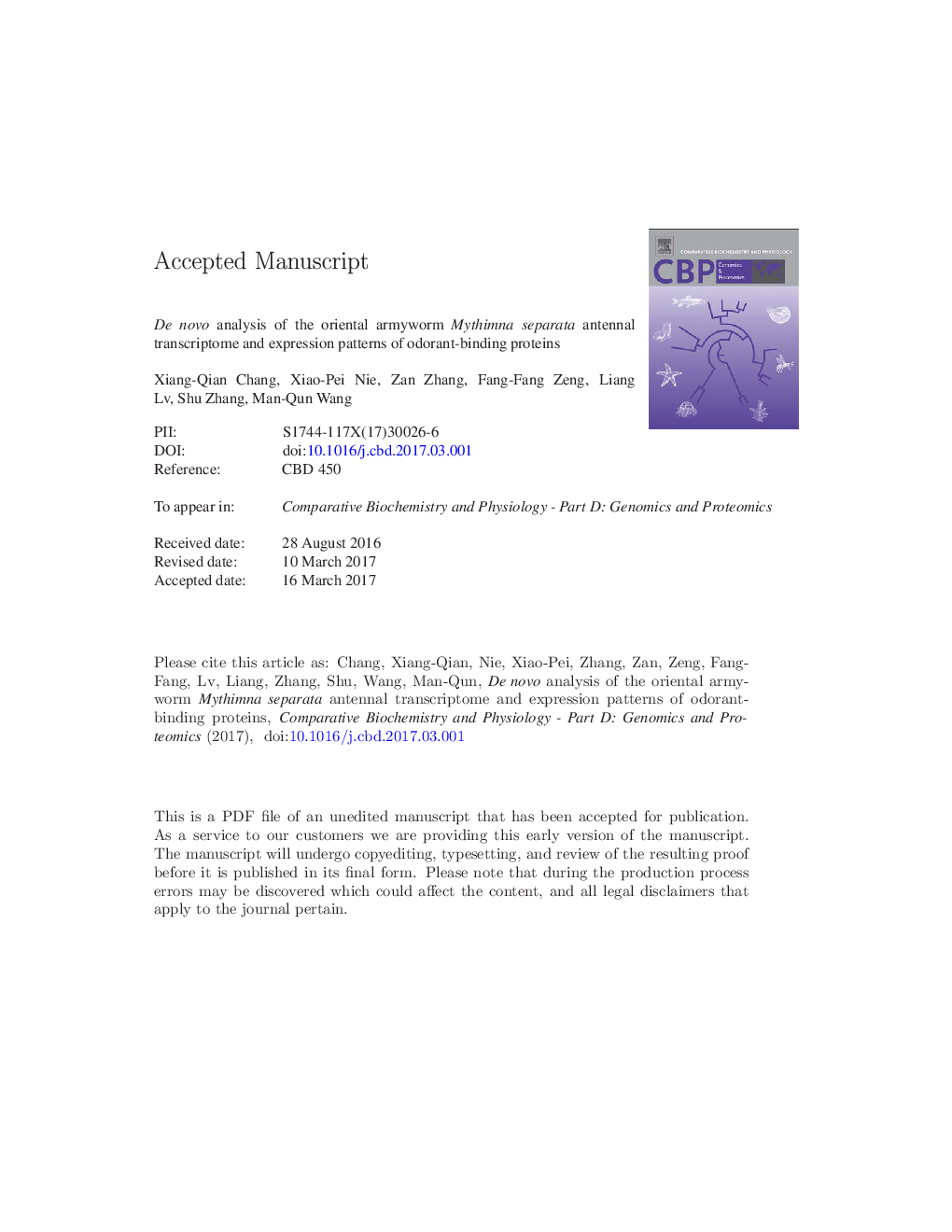| Article ID | Journal | Published Year | Pages | File Type |
|---|---|---|---|---|
| 5510738 | Comparative Biochemistry and Physiology Part D: Genomics and Proteomics | 2017 | 36 Pages |
Abstract
To better understand the olfactory mechanisms in the oriental armyworm Mythimna separate, one of the most serious pests of cereals, an antennal transcriptome was constructed in this study. A total of 130 olfactory related transcripts were identified. These transcripts were predicted to encode 32 odorant-binding proteins (OBPs), 16 chemosensory proteins (CSPs), 71 olfactory receptors (ORs), 8 ionotropic receptors (IRs), 1 gustatory receptor (GR) and 2 sensory neuron membrane proteins (SNMPs). Q-PCR analysis of the temporal expression profiles of seven OBPs in different tissues indicated that, except for MsepOBP19 which was highly expressed in the wings of 0-day-old adult and MsepOBP20 which was low expressed in all tissues, other tested MsepOBPs were significantly more highly expressed in the antenna than in the head (antenna excluded), thorax, abdomen, legs and wings. The expression levels of MsepOBPs were diverse in different life stages (differed on eclosion days). MsepOBP5 exhibited female-biased expression in 0- and 5-day-old adult, while no gender bias in 1- and 3-day-old adult was detected and similar expression profiles were found for MsepOBP7, 20, 24 and 26. In addition, we found that although the expression of MsepOBP22 was female biased in 0- and 5-day-old adult, in the 3-day-old adult it was male-biased. Our findings established a foundation for future studies of the functions of olfactory proteins in M. separata.
Related Topics
Life Sciences
Biochemistry, Genetics and Molecular Biology
Biochemistry
Authors
Xiang-Qian Chang, Xiao-Pei Nie, Zan Zhang, Fang-Fang Zeng, Liang Lv, Shu Zhang, Man-Qun Wang,
